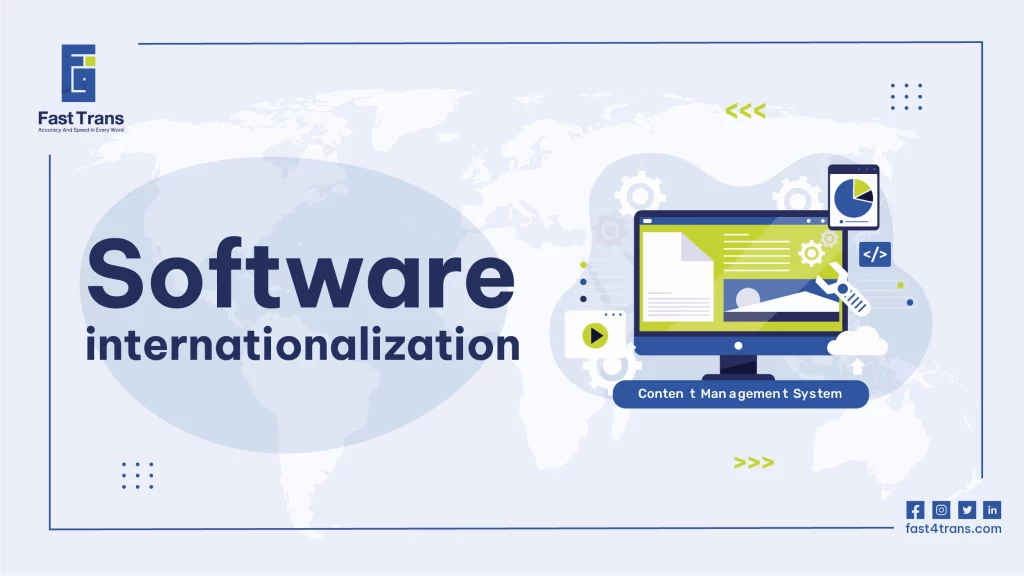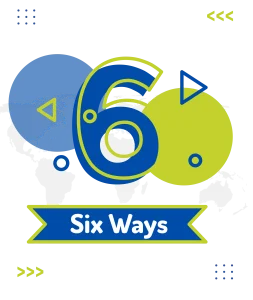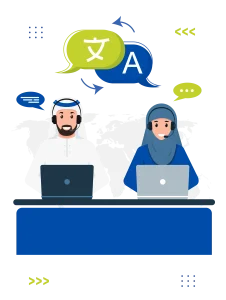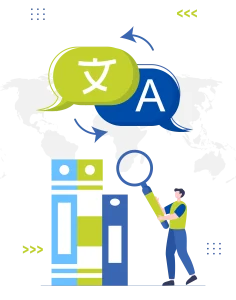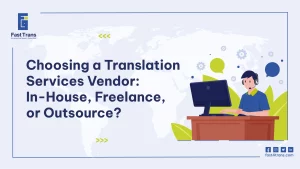In the context of translation, the words internationalization, and globalization are sometimes used interchangeably to refer to similar concepts all go under the umbrella of localization. But in reality, there is a significant difference between each one either in methodology or purposes.
We’ve so far covered what localization is and tackled topics like website localization, and app localization.
In this article we’ll talk about software internalization, what is it? its best practices, how it is done, and how it is related to localization at large.
What is software internationalization?
Software internationalization refers to intentional optimization steps done by software developers and coders during the design and creation of software with the aim of making the software ready for localization and flexible for global audiences, making it adaptable to different users from varying cultural and regional backgrounds.
It is a process done before software localization.
In other words, it is a technical process that establishes a flexible and adaptable software architecture.
What is software localization?
Software localization comes after internationalization, and it involves tweaking all textual and non-textual aspects of the user interface to ensure a smooth user experience for them that speaks in their language, has a familiar tone of voice, and interacts with familiar symbols and visuals that aren’t foreign to them.
This involves but is not limited to (date formatting, currency symbols, size charts, time zones, removal of any culturally inappropriate signal, awareness of regional vacations and holidays, design, images and visuals, and numeric values…)
Things to consider when you internationalize your software
Placeholders
A placeholder is a special set of characters that represent a variable and is replaced by the actual value programmatically.
How so?
When coding, it is extremely important to use placeholders for text. They can search a database of translation files and retrieve them to display the correct language for each user.
So, instead of hardcoding each language separately. Software internationalization replaces text with placeholders that choose the correct language for the desired users.
For instance, instead of literally typing a call to action like ‘purchase now’ or ‘buy now’, the placeholder will retrieve the correct words and display them for the user based on their language.
This can be done through Unicode.
What is a Unicode?
Unicode is a text encoding standard that can represent thousands of characters and symbols across world languages including those from right to left like Arabic and Hebrew, and distinct languages like Chinese and other symbols like emojis.
Localization
The source code of the software needs to be localized, meaning that it should recognize cultural differences and preferences, by incorporating enough localization data in the source library.
The code needs to pick the right time and date format, numeric formats, time zones, writing systems, honorifics, and other similar localization details.
Date formats differ from one region to another. In the US it is (month-day-year), while in China it’s (year-month-day).
Time format refers to using a 12-hour clock or a 24-hour clock for instance, 2:30 PM could also be written 14:30.
Text Expansion
One thing to keep in mind is that some languages take more or less space during translation. The software user interface (UI) has to accommodate text expansion without messing with the whole layout.
Separate Code from Content
All textual files should be externalized and not hard coded into the source code, including error messages and prompt text into resource files.
8 tools for software internationalization
Considering using software internationalization tools in your next project? Take a look at 8 of the best tools in 2024:
1-GNU gettext
GNU is widely used for software internationalization, it helps in extracting text strings from the source code and managing their translations.
2. Transifex
Transifex is an online localization tool that also helps in managing translation projects and integrating translation into the software.
3. Crowdin
Crowdin is an online translation management system that offers important linguistic features like translation memory, and glossaries.
4. Lokalise
Similar to Crowdin, it also offers over-the-air updates (OTA).
5-Unicode (CLDR)
- Provides locale data for various languages and regions, including date and time formats, currency symbols, and other cultural conventions.
6–Babel
- A Python library for internationalization and localization. It provides utilities for formatting dates, numbers, and messages according to locale-specific rules
7. Phrase
A well-established translation management platform that helps manage localization projects. It offers features like in-context editing and integrations with development tools.
8. OneSky
A platform for managing translation and localization projects. It offers features like automated translation suggestions and support for multiple file formats.
5 Software Internationalization Best Practices
1. Design for Localization from the Start
When the intent from the start is to localize the software, the design can be optimized to facilitate the localization process. This could be anything from using externalized text strings to keeping in mind language differences like text expansion.
2. Testing
Test your software with international users who speak different languages and come from diverse cultural backgrounds to ensure a smooth user experience and spot any points of weakness, like testing RTL right to left language layout.
3. Use internationalization frameworks
Save time and ensure consistency by making use of libraries designed for internationalization like Angular i18n.
4. Use language resources
You want your software to be consistent across all languages. Language resources like glossaries, contextual information, and style guides need to be up to date.
5. Make it inclusive and culturally appropriate
Don’t forget that that at the end of the day, the goal of localization nd internationalization is to enhance user experience. One crucial way to achieve that is through thinking of the broad spectrum of your users.
Asking questions like: what are their age groups, and gender, is the software optimized for people with disabilities? Is it insensitive to any cultural aspect? Is the design up to international standards?
Make sure to work with linguistic experts and native speakers who can guide you through localization and provide feedback on cultural nuances you might miss out.
Pro tip: Avoid embedding text with images. If you do not separate text with images, you will need to translate or edit the text independently for each image. However, when using text overlays, it is easier to translate it for each language.
Benefits of software internationalization
Streamlining localization
Software internationalization as a prerequisite process helps smoothen and streamline localization workflow among team members (developers/linguists).
Tap into new markets
By internationalizing and localizing your software, your business will reach new markets, users, and audiences; which eventually leads to increased revenue and customer base expansion. You can think of Adobe, Facebook, MS Office, and WordPress as successful examples of this.
Competitive advantage
Marketplaces can get competitive with many businesses delivering similar products, by supporting multiple languages you are surpassing competitors.
Brand Trust & user satisfaction
Committing to global accessibility significantly builds trust in international markets and strengthens brand image in the long run. Moreover, users feel more comfortable interacting with software that goes above and beyond to communicate in a familiar tone and design.
What is globalization vs internationalization software?
We’ve so far tackled the difference between software internationalization, and software localization. But sometimes you’ll stumble on the term ‘software globalization’.
How is it different from software internationalization?
Software Internationalization |
Software Globalization |
| (i18n) | (g11n) |
| Internationalization is the design process of software that establishes a flexible software infrastructure that streamlines localization as a result.
It makes the software adaptable and flexible to different languages without making changes to the source code. |
Globalization is a broader term that includes both internationalization and localization.
It encompasses not just the technical aspects of software design but also is inclusive of cultural aspects ‘worldwide’. |
you might be interested in the difference between globalization and localization
Software Internationalization terminologies
- Localization (l10n): culturally adapting software for a specific language and region.
- Internationalization (i18n): Designing software to make it flexible for localization and easy adaptation to different languages.
- Unicode: A character encoding standard that supports thousands of characters that encompass all major languages, and other symbols like emojis.
- Resource file: Text content stored outside the source code.
- Machine Translation (MT): Automated translation by the use of machine learning algorithms.
- Textual Placeholders: In text-based formats like strings represented by symbols.
Internationalization is Easy with Fast trans
That being said, Fast Trans as a certified translation company is there to help you localize any sort of medium for your business. Whether it is software internationalization and localization, or website and application localization.
Our team of translators has decades of experience with top clients in the Middle East and worldwide, working with hugely diverse types of documents, delivering tight deadlines, and breaking through the translation market at a very competitive price.

